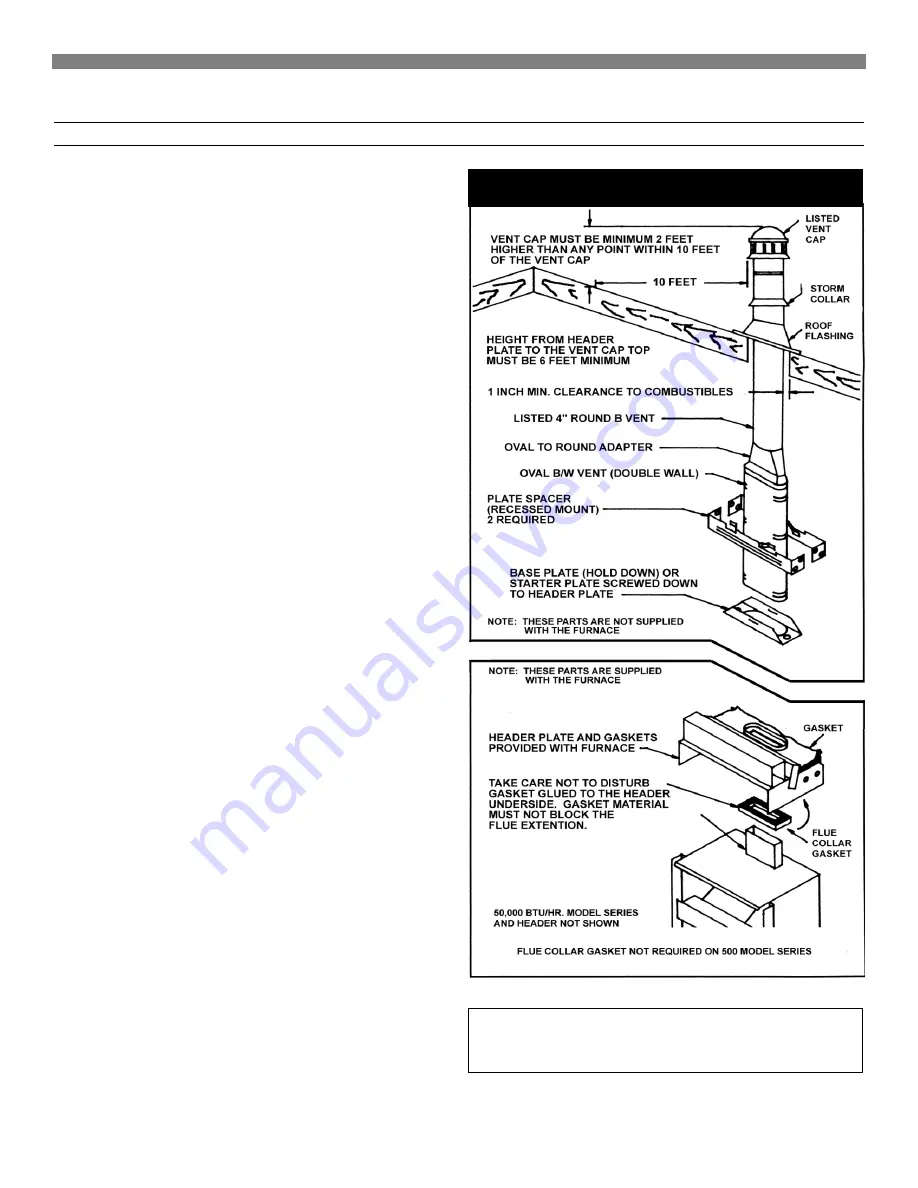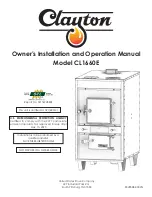
Installing Your Furnace
14
Vent Installation
The vent installation must comply with all local codes and
ordinances. If in doubt, consult your local codes or inspector.
The furnace vent must be directed to the outdoors so that harmful
combustion gases will not collect inside the building.
This furnace must not be connected to a chimney flue serving a
separate solid-fuel burning appliance.
This product is design certified to ANSI Z21.86. It must be
installed with a U.L. tested and listed type "B" approved vent and
type "B/W”
approved vent (Figure 8). Older style terra-cotta,
transite, clay, concrete or masonry type vent pipe cannot be used
with this appliance. These types of vent pipe will not heat fast
enough to establish a draft, which will result in improper venting of
combustion products. Consequently, this could cause the vent
safety control system to shut down the furnace.
The area above header within the stud space MUST be kept clear
of any attic insulation to allow the free circulation of air around the
oval vent piping. In some areas the building code requires the
use of an attic shield.
The B/W vent must extend through the ceiling and roof
terminating at least 12-feet above the finished floor on which the
furnace rests.
INSTALL FURNACE VENT
Attach a 4-foot length of oval, double-wall vent pipe through the
plate spacers to the hold-down plate. Push the vent pipe into the
hold-down plate until it is completely seated. The hold-down cleat
will engage the groove in the vent pipe.
COMPLETE THE VENTING
Type B/W
gas vent shall extend from the header plate of the
furnace to a point above the highest ceiling plate within the stud
space through which the vent passes, without any offsets or
crossovers. The first vent pipe offset, (if required), may not be any
closer than 2-feet from the header. After a type B/W gas vent
passes through the highest ceiling plate within a stud space
above the furnace to which it serves, the vent system may be
completed with a Type B gas vent, from the
SAME
manufacturer
(do not mix brands of pipe). Offsets cannot be greater than 45
degrees from vertical. Refer to The Uniform Mechanical Code.
Install the oval-to-round adapter. Complete the piping extending it
through the roof. Use a 4-inch round, double-wall (Type B) vent
pipe, roof flashing, storm collar and vent cap as shown. The vent
cap must be at least 2-feet higher than any point that is within 10-
feet of the vent cap. There must be at least a 1-inch clearance
between the vent pipe and any combustible material.
Figure 8 – Typical Vent Installation
CAUTION:
To avoid damage to wiring, be sure to
route the wires away from the path of the furnace
vent.















































